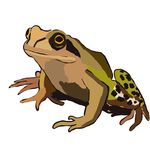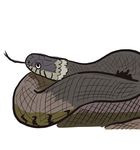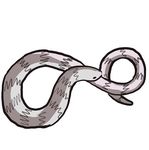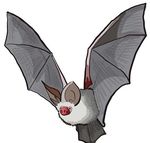What's in your Garden? - S4 Science Swansea University
←
→
Page content transcription
If your browser does not render page correctly, please read the page content below
What’s in
your Garden?
Your garden is bursting with all kinds of life. That’s true no matter the size
or the amount of greenery. Use these guides to find and identify some of
the wildlife you have at your fingertips.
Swansea University
Science for
Schools Scheme
(S4) Funded by the European Social Fund and the Welsh Government.Key Stage 3 Activity
Amazing If you’re lucky enough to have a pond in your (or your
neighbour’s) garden you might see some of these lurking
Swansea University
Science for
Amphibians
nearby. If not, try making your own mini-pond with Schools Scheme
the Wildlife Trust!
Tadpole Common Frog Common Toad Smooth Newt
All UK amphibians lay their eggs All UK amphibians lay their eggs Of all the UK toads, you are most The Smooth Newt is the most
in fresh water (think frog-spawn) in fresh water (think frog-spawn) likely to find a Common Toad in common species of newt spotted
around March. These eggs hatch around March. These eggs hatch your garden. Look for dry, bumpy in gardens but don’t confuse one
into tadpoles in April. Tadpoles into tadpoles in April. Tadpoles olive-brown skin and short legs, for a lizard! They have greyish
are adapted to life underwater, are adapted to life underwater, suitable for crawling rather than skin, a bright orange belly and
with features such as gills and with features such as gills and hopping. They lay their spawn dark spots all over. During the
tails! By June, tadpoles lose tails! By June, tadpoles lose as long, uniform chains (like a spring, males have a smooth
these features and gain lungs, these features and gain lungs, string of beads) in spring. There crest running down their back
legs and bones as they slowly legs and bones as they slowly is actually no real scientific and tail. Newts will carefully wrap
metamorphose (change) into metamorphose (change) into difference between frogs and each of their eggs in the leaf of
adults. The tadpoles of frogs adults. The tadpoles of frogs toads! Really, toads are just an underwater plant to hide them
and toads are herbivores (plant- and toads are herbivores (plant- types of frogs that share certain from predators - what thoughtful
eaters) while newt tadpoles are eaters) while newt tadpoles are features. UK toads all belong to parents! They mostly live on
carnivorous (meat-eaters) with carnivorous (meat-eaters) with the family Bufonidae, and frogs dry land, eating insects and
diets that change to match the diets that change to match the to Ranidae, which helps up they hibernate underground
adults’ as they grow. adults’ as they grow. separate them. in the winter.
Illustrations by Rebecca Ellis.Key Stage 3 Activity
Brilliant Birds are easy to find. Just put out some bird seed (loose or in a feeder)
and wait for them to flock to you. Get into the habit of putting out food
Swansea University
Science for
Birds
and you’ll have regular visitors in no time! Schools Scheme
Blackbird Blue Tit Collared Dove Goldfinch
Colourful, agile little birds - you
The males are very easy to Goldfinch You can spot a
can easily spot their bright blue A pale, pinkish-brown bird with
identify due to their jet black goldfinch by it’s bright red face
caps. In warmer months they a distinctive black collar around
plumage (feathers) with bright and yellow wing patches. Their
love to eat insects from the tips the back of the neck (hence its
orange beaks and eye rings. The favourite food is seeds from spiky
of twigs and shoots. They also name!). They are closely related
females are much browner, with plants, such as thistles, but how
eat nuts and seeds but don’t to the wood pigeon but they are
a pale throat and speckles on do they avoid getting hurt? Their
like them as much, only eating a much rarer sight. Did you know
the chest. They love mimicking beaks are long and thin, allowing
them when insects aren’t around there is no scientific difference
the sounds around them, which them to reach in between the
(especially over winter). When between doves and pigeons?
means their singing tends to spikes! Luckily for us, they are
raising their chicks, tits rely Doves tend to be better liked
sound like car alarms! During the seen visiting bird tables and
almost entirely on winter moth but they’re all actually part of
breeding season (April-August) feeders in gardens more and
caterpillars. This is so important the same bird family! You can
they will fight each other for nest more so keep a look out. Make
that they always make sure to see collared doves pecking the
space, but it isn’t personal and sure to be looking in spring and
lay their eggs so they will hatch ground around the bird table
they all happily roost together summer as they migrate south as
when the caterpillars are most either by themselves or in pairs.
in winter. far as Spain for the winter.
abundant!
Illustrations by Rebecca Ellis.Key Stage 3 Activity
Brilliant Birds Birds are easy to find. Just put out some bird seed (loose or in
a feeder) and wait for them to flock to you. Get into the habit
Swansea University
Science for
Continued... of putting out food and you’ll have regular visitors in no time! Schools Scheme
Great Tit Green Finch House Sparrow Wood Pigeon
Very similar to the blue tit, but you The largest of the UK’s finches,
A small brown bird with black Similar to the feral pigeons you
can tell them apart by the Great the greenfinch can be identified
speckles down the back and a can see in the town centre, but
Tit’s larger size, black cap and by it’s olive green and yellow
short wide beak. The male also wood pigeon lack the shimmery
line down the chest. They are plumage. The females also have
has an additional grey crown chest of their inner city cousins.
also more likely to feed from the a brownish tinge running down
and black bib. House sparrows They are also larger and lighter
ground and are happier eating the head and back. Greenfinches
might be the bird with the closest in colour with a white patch on
nuts and seeds in winter. Did you love eating seeds but they are
relationship with humans, both the side of the neck. They are far
know, only 1 in 10 tits survive too heavy to eat straight from
now and throughout history. They too big to eat from bird tables or
their first year outside the nest? plants! They have to eat their
love to make nests in and around feeders so have to peck at the
This sounds quite sad but it is seeds from the ground instead.
our buildings and are commonly nuts and seeds that have fallen
very common among birds and Sadly, their diet relies on weeds
seen in our parks and gardens. to the ground below. They are
is mostly due to natural causes. and the overuse of herbicides in
Sadly, Britain’s numbers have very clumsy and noisy flyers who
Without plenty of small birds for today’s farming and gardening
dropped an estimated 71% since produce a soft cooing call from
food, many predator species has reduced the amount of
the 1970’s. tree tops.
would starve. food available.
Illustrations by Rebecca Ellis.Key Stage 3 Activity
Magnificent Everyone loves seeing cute, fuzzy little critters but most only come out at
Swansea University
Science for
Mammals
night! Some can be a rare sight but, if you spot one, put some suitable
food out and you’ll get return visitors in no time. Schools Scheme
Bat European Hedgehog Grey Squirrel Red Fox
Bats are very common yet we If you search your garden at Foxes are frequent night-time
often don’t see them because night you might spot a hedgehog Grey Squirrels are the mammal visitors to our gardens – bin
they come out at dusk, are very or two foraging (searching) for you’re most likely to see in your night especially! Redfur, pointy
fast and small and tend to live slugs and worms – but they will garden, especially if you leave ears and bushy tails make the
in old buildings, ancient woods also enjoy a bowl of cat food! Did birdseed in easy-to-reach places. fox unmistakable, even from a
or rocky hideouts. There are 30 you know the UK’s hedgehog They are identifiable by their grey distance. Most UK towns and
mammal species in the UK and population has dropped more fur and bushy tail that they use cities have a large population,
18 of those are bats! Telling them than 97% in the last 70 years? for balance in the tree tops. Grey but their diet and behaviour can
apart is very difficult without They have lost a lot of their Squirrels are actually an invasive vary by location. For example,
handling (please don’t do this, natural habitats. Hedgehogs species brought from America in foxes in Bristol largely rely on
it is illegal without a licence and are also in trouble because of the 1800s that have out-competed scavenging human food waste
bats a very fragile) but if you the use of pesticides (chemicals the native Red Squirrel for food but those in London mostly hunt
live in an urban or suburban sprayed on plants) to control and habitat. They love nuts and wild mammals and birds. They
area you are most likely to see pests like slugs and insects. If seeds, burying a secret supply are adapting to the people –
a Pipestrelle Bat, while rural the hedgehogs eat the poisoned for winter which is often forgotten Bristolians love foxes and often
residents may also see Serotine pests, they also eat about – allowing the seeds leave out food while Londoners
and Long-Eared Bats (pictured). the pesticides. to grow. consider them pests.
Illustrations by Rebecca Ellis.Key Stage 3 Activity
Radical Reptiles are surprisingly common but extremely shy and tend to run
away as soon as they sense people approaching. You may still spot
Swansea University
Science for
Reptiles them basking in the sun on a warm rock though. Schools Scheme
Adder Common Lizard Grass Snake Slow Worm
Adders are the UK’s only
venomous snake and are most Grass snakes can be identified by
True to its name, the Common Despite its appearance, the slow
easily identified by their black the yellow collar behind the head
Lizard is the UK’s most worm is not a snake (no it’s not a
zig-zag pattern and red eyes. and their dark green or brown
numerous and widespread worm either!) but a legless lizard.
They are very secretive and colouring. They are the UK’s
reptile. They vary in colour from You might be thinking that‘s the
prefer to spend their time in largest snake, but don’t worry,
greys to browns to blacks. The same thing but the slow worm
heathland or moors, away from they are completely harmless to
males also have brightly coloured has a few features that put is
people. Their venom is used humans. They are normally found
bellies with dark spots, while firmly in the ‘lizard’ group. They
to immobilize the lizards and in wetland or dry grassland but
females have paler undersides. have smoother scales, can shed
small mammals they hunt and, can also be found in gardens,
Did you know their tails can grow their tails and have eyelids (real
although painful, is rarely fatal especially if there’s a pond
up to double the length of their snakes can’t blink!). They are also
to humans. Adders would much nearby – they can swim to hunt
bodies? Not only that, but they the most likely reptile for you to
rather slither away from people fish and amphibians, some of
can shed their tail at any time to spot in your garden – especially if
and only bite if they feel like their favourite prey! Females lay
distract potential predators (don’t you have a compost heap, where
they’re trapped and can’t get their eggs in the warmth of rotting
worry it grows back). Unlike most they love to hunt slugs in summer
away. They are easiest to spot vegetation and incubate them
reptiles, the females can give and hibernate in winter.
basking on a warm rock in March, (keep them warm) until they hatch
birth to live young.
after their hibernation. in autumn.
Illustrations by Rebecca Ellis.You can also read



























































